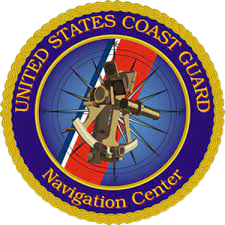The frequency listed or displayed for a radio station can differ, depending upon the radio receiver, the type of modulation used and how you are demodulating (or modulating) the signal, and the person listing the frequency. This is especially true for high frequency (HF) radios. To help avoid confusion, three terms are used to describe these radio frequencies: assigned, carrier, and window.
Assigned Frequency
The assigned frequency is defined by the International Telecommunications Union Radio Regulations as "the centre of a frequency band assigned to a station". In fact, it is the actual radio frequency of the signal being transmitted and received. This is the most commonly used frequency designation.
Carrier Frequency
The carrier frequency is the frequency of the carrier, or the suppressed carrier of a signal. For many, perhaps most radio signals, the carrier frequency and the assigned frequency are identical. They are identical for AM (dual sideband) signals. They are different for single sideband radios. For maritime HF single sideband transmissions, which are always upper sideband, the assigned frequency is always 1.4 kHz greater than the carrier frequency.
The carrier frequency designation, not the assigned frequency designation, is normally used in referring to single sideband transmissions. History partially explains the reason for this. Marine radiotelephony was originally AM (dual sideband), and the carrier and assigned frequencies were the same. Certain frequencies, such as the distress and calling frequency 2182 kHz, were internationally recognized and known by any mariner using a marine radiotelephone. When marine spectrum became scarce, the International Telecommunications Union moved all marine radiotelephony transmissions from dual sideband to the more efficient single sideband. At first, the carrier signal was left untouched, so old AM radios could still receive the new single sideband transmissions. In time however, the old carrier signal was eliminated. The old marine frequencies such as 2182 kHz, commonly known and used, were retained and still displayed by marine radios. Although no signal was actually transmitted on these carrier frequencies any longer, receivers still had to be tuned to those frequencies so that the voice signal could be properly demodulated and understood.
Maritime digital signals, such as narrow band direct printing (NBDP or sitor) or digital selective calling (DSC), are transmitted on an assigned frequency 1.7 kHz above the (suppressed) carrier frequency. Marine weatherfax signals are transmitted on an assigned frequency 1.9 kHz above the carrier frequency. NBDP, DSC and weatherfax radios normally display the assigned frequency. However, if a single sideband radio with a separate decoder unit is used to receive a sitor, DSC or weatherfax signal, it's likely that receiver would have to be tuned to the carrier frequency for the decoder to work properly.
The ITU assigned channel numbers to many single sideband and NBDP frequencies to help avoid this confusion. However, DSC frequencies, and most simplex single sideband, NBDP and weatherfax frequencies do not have channel numbers.
Window Frequency
The window frequency is simply the frequency displayed (on the front panel numeric display "window") by a particular radio receiver or transmitter. Depending on the equipment, the window frequency could be either the carrier or the assigned frequency. Since the window frequency is dependent upon the equipment used, the term is not generally used by the USCG.
Is the frequency listed assigned or carrier? What frequency do I tune my radio to?
The USCG tries to use standard convention in its listing of radio frequencies: Single sideband frequencies are generally carrier frequencies; all others are generally assigned frequencies. When the carrier and assigned frequencies differ, we generally list both.
Read your radio's instruction manual, or talk to your marine electronics dealer, to learn whether your radio should be tuned to the assigned or the carrier frequency.

